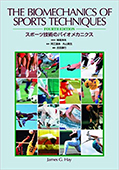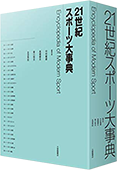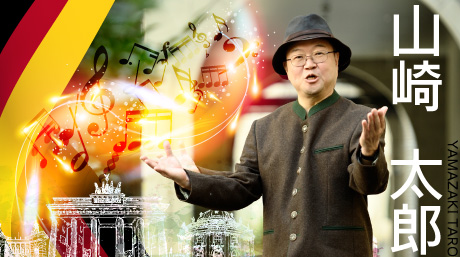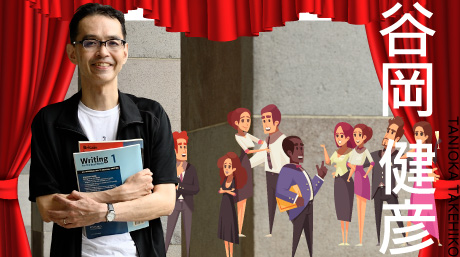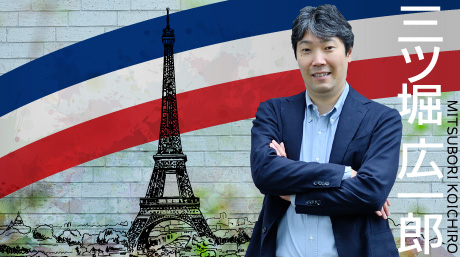Institute for Liberal Arts News
Intimate Relationship between Sports and Science Enhances Competitiveness of Paralympians
Associate Professor Takeo Maruyama, Biomechanics
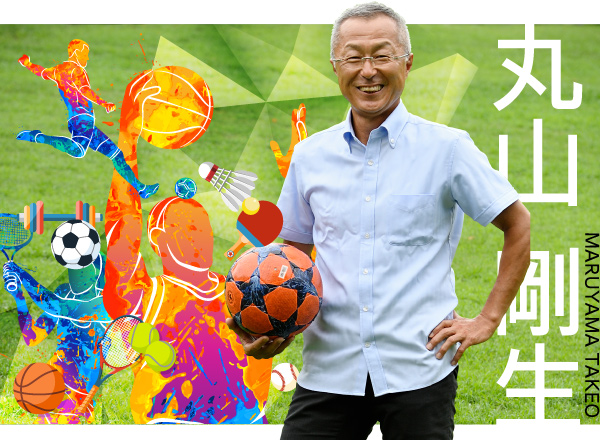
Marshmallow challenge unites everyone!
Seminars emphasize communication skills
Among the liberal arts classes, I teach Health Science, Laboratory of Health Science, Sports Science, and Biomechanics.
In this era of an aging society with fewer children, Japan faces a national challenge regarding the health of its people. Health science presents a scientific approach to this challenge through thought process, analysis, and on occasion, prescription. Sports science is the branch that focuses on sports. A scientific approach is possible for the maintenance of human health and improving the athletic sporting record. In addition to the medical perspective, the engineering perspective becomes quite important. With respect to the latter, the technical research of physical bodies and movements of organisms is useful: this discipline is called biomechanics.
For my Health Science classes that first-year undergraduate students take, the lectures draw from “Health Japan 21,” the national health-enhancement program promoted by the Ministry of Health, Labour and Welfare. I discuss the importance of health and what constitutes healthy activity in our daily lives.
The key message to my students is their vital, youthful existence in a greying Japan with fewer children. In essence, youth, health, and high exercise capacity alone are valuable to an aging society. Most of my students, you see, are 18 or 19 years old. No matter how much I explain, they cannot gain a real sense of future risk to their physical bodies sustaining a lifestyle-related disease, metabolic syndrome, or locomotive syndrome.
Nonetheless, I constantly tell my students to imagine when they might grow old in the future, sustain a health disability, or become unable to physically move their body well. In the future, I plan to conduct a class incorporating group work by having the student create a “mandala chart” or 3 x 3 framework of nine squares to consider how humans should take action to permanently maintain good health.
The Laboratory of Health Science class is held with approximately 40 students in the gymnasium. It looks like physical education, but we practice science properly. First, measurements of muscle strength, muscle endurance, flexibility, body composition, and whole-body endurance are made individually. The gymnasium is arranged with a variety of measurement apparatuses, you see. The body and brain have to learn the necessary elements to physical strength for maintaining one’s health. For second- and third-year undergraduate students, Sports Science is the course to contemplate how science can contribute to enhancing athletic skills in sports. In my classes, I actively present sports played by physically disabled people, in addition to sports played by people in ordinary healthy condition. This comparison enables external researchers to come and lecture about their research on wheelchairs, prosthetic legs, and motion analytics.
Biomechanics:
Science supporting Paralympic athletes
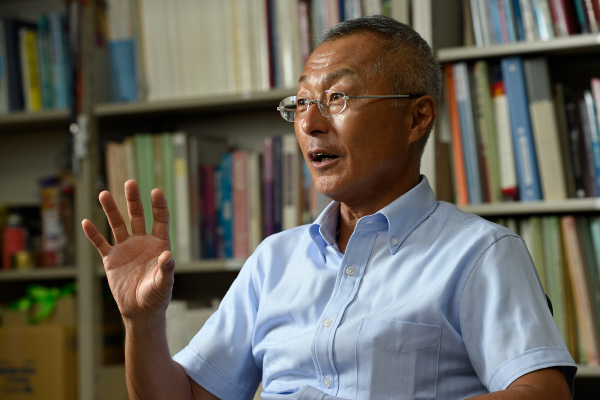
Biomechanics represents my core research discipline, which also forms part of my classroom instruction. The word is an amalgamation of “bio” for organism or living creature and “mechanics” for the branch of physics that deals with energy and forces and their effect. Biomechanics is also called bioengineering. This academic discipline scientifically examines the structure and motion of organisms through the lens of mechanics and contemplates the effects. My research subject is human bodily motion, which I analyze to discover efficient motion. Motion of the human body is, in essence, the relative motion among the various joints, which can be explained mathematically. For example, what form and what magnitude of force is required in the action of extending one’s hand? We can quantitatively evaluate that. Since forces are invisible, we must measure—which means we must devise a mechanism and device to make the measurement. Part of my research involves the creation of such mechanisms and devices.
In biomechanics research, physical motion is numerically quantified. The results can be applied to the real world across various fields and directly support physically disabled or elderly individuals. The field is indispensable to enhancing sport competitiveness and developing devices for normally fit people and physically disabled people. One specific case is support for wheelchair athletes in the Tokyo 2020 Paralympics. The effort is part of the Functional Development of Japan High Performance Sport Center program fostered by the Japan Sport Council.
The original connection grew from my membership in the Sports Engineering & Human Dynamics Division of the Japan Society of Mechanical Engineers and the support work associated with the Rio de Janeiro 2016 Paralympics. My involvement in the Paralympics’ competitiveness enhancement project has continued ever since.
Researchers across various fields participate in this project. My effort concerns physical strength measurement, drive capability measurement, and apparatus development for wheelchair athletes competing in tennis, rugby, and basketball. For the Rio games, Professor Motomu Nakashima, who conducts hydraulics engineering research at our School of Engineering, committed to supporting aquatic sports and the development of bearings for wheelchair tennis. Faculty of Tokyo Tech are helping through the power of science to enhance the competitiveness of Paralympians vying for medals.
Origins of sports engineering at Tokyo Tech:
Evolution of sports through science and technology
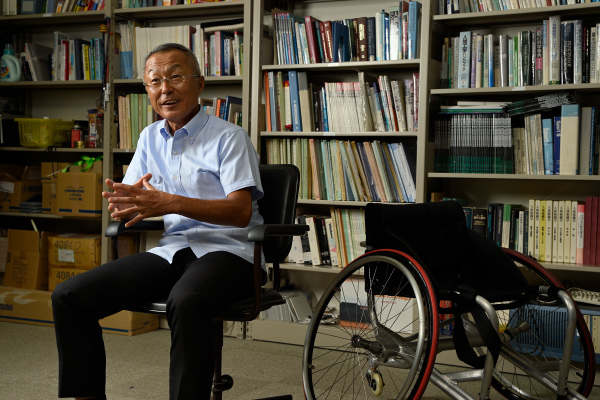
In regard to the discussion about sports we are having, I should mention sports engineering, another field of my research. This academic discipline applies the inspirations in biomechanics through engineering analytics of sports, and can contribute to improving an athlete’s record or development of sports equipment. In fact, Tokyo Tech is the birthplace of sports engineering. Over 30 years ago, professor of mechanical engineering Akio Nagamatsu, who was at Tokyo Tech back then, conducted vibration analyses of hitting implements like golf clubs and tennis rackets. Aerospace engineering professor Koryo Miura at the University of Tokyo, known for his love for golf, became interested in this research.
The two pioneered the field of sports engineering in which sporting equipment is developed. Professor Emeritus Sadayuki Ujihashi at Tokyo Tech continued on this path, and today Professor Nakashima remains engaged. Members of the Sports Engineering & Human Dynamics Division of the Japan Society of Mechanical Engineers originally hail from Tokyo Tech, you see. Sports engineering came into being through mechanical engineers analyzing sports, not by experts involved in sports.
Tremendous improvements in sporting records reveal the prowess of science and engineering. Tennis rackets used to be made of wood. Stronger and lighter materials like steel, aluminum and carbon have enabled larger sizes and made the ball easier to hit. In the world of speed skating, emergence of the “clap” skate in which the blade and heel separate has dramatically improved records. Baseball bats, soccer shoes, and sport wheelchairs are additional examples of the huge number of ways mechanical engineering research has contributed heavily to improving the records of sporting events.
Health and sports seem far removed from science and engineering. Experiencing biomechanics and sports engineering in person, however, can allow anybody to sense that the connection of science and engineering to health and sports is quite close. For instance, most people can stand up instinctively, but the posture of a human standing up cannot be expressed numerically without rudimentary mathematical knowledge of relative physical positions of objects and conversion of coordinates. Such research is indispensable for development of a biped robot. In this sense, students of science like physics and math can comprehend and enjoy sports from a fundamental perspective. I explain this to my students, too.
Physical well-being is vital for sci-tech students
Hope for broad education beyond their major

I came to Tokyo Tech in 1985. Since then, my continuous tenure over the past 35 years has observed an evolution. University liberal arts classes, in particular, have faced challenging changes over the years. Broad policy regarding standards for the establishment of universities was issued in 1991 and resulted in vast cuts to liberal arts classes at many universities. Although Tokyo Tech is a university historically centered on science and engineering, the instruction of liberal arts remains passionate. The style of a “wedge-shaped style education” organically links the courses of specialization with liberal arts courses, which join the curriculum of first- and second-year undergraduates, as well as third- and fourth-year, graduate, and even doctoral students. At the time of university reforms, however, Tokyo Tech also slimmed its liberal arts courses. Required courses related to health and sports were cut.
The birth in 2016 of Institute for Liberal Arts, where I belong, resurrected Tokyo Tech’s color of emphasizing liberal arts education. Unfortunately, all instruction associated with health and sports became electives, but my laboratory is reaping a range of success as research equipment becomes more complete each year. In my opinion, a generous environment supplied to a liberal arts research discipline is particularly noteworthy at a scientific and technical institution like Tokyo Tech.
Tokyo Tech Visionary Project, presented by the Institute for Liberal Arts, is a required Core Liberal Arts Education course for all first-year undergraduate students. Instruction alternates between lecture-hall presentations attended by large numbers and seminars held as small classes with 28 participants. Some seminars I have taught involved experimental programs. In the seminar, four students each are assigned to their home group to engage in group work based on lecture material and to mutually critique their writing, for example. In my class, we engage in a teambuilding “game” to encourage teamwork. The idea is to ease working together.
For example, the groups build a tower with twenty strands of dry pasta, and then stack marshmallows to compete for the tallest edifice. In addition to this “marshmallow challenge,” I have students engage in a “paper tower” race to build the highest possible tower regardless of shape or size by using 30 sheets of A4-sized paper. When the students actually go to work on these challenges, some of them start calculating how to logically build the highest, while other teams steadily try to increase the height by repeated trial and error. The efforts truly reflect the nature of Tokyo Tech students. But more importantly, the teams bond quickly and well, because the winner and losers of the height competition are obvious. I also employ the Johari window as a technique for self-analysis (psychology model for understanding one’s own characteristics by classifying them in four windows: Open, Blind Spot, Hidden, Unknown), which is useful for building smooth communication.
I have one hope for university education—that students may participate more actively in physical education and sports, and universities may incorporate more physical education and sports in the curriculum. Society tends to view science and engineering students as “non-jocks,” but in the future they will face harsh environments to conduct research and technology development. Maintaining one’s health and increasing physical fitness are therefore vital themes. Stamina is key to tenaciously continuing one’s research.
Tokyo Tech is replete with exercise facilities including a gymnasium arena, martial arts dojo, outdoor field grounds, all-weather tennis courts and swimming pool. I want elective classes and group activities to actively put them to use.
I always want our students to broaden their horizons beyond their own field of specialization, including sports and even further. The time spent peering into other worlds can also reveal the influence that one’s specialization has on society and people and teach how it might be useful. Upon entering university, students should challenge themselves across the board. Tokyo Tech has lots of forums for challenges. I want our students to relish those challenges so they can expand their own worlds further.
![]()
Associate Professor Takeo Maruyama
Research Field: Biomechanics
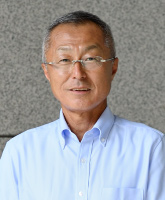
Associate professor of Institute for Liberal Arts, Tokyo Institute of Technology: Maruyama Laboratory, Graduate Major in Social and Human Sciences, Department of Social and Human Sciences, School of Environment and Society. Assumed faculty position at Tokyo Tech in 1985 after completing master’s degree in Coaching, Physical Education Graduate Program, University of Tsukuba; associate professor since 1996. Research subjects include biomechanics (analysis of human motion characteristics), sports engineering (analysis of interactions between humans and surroundings), bio-information (utilization of human bio signals as data). Recipient of 2008 Japanese Society of Biomechanics Award. Member of Japan Society of Exercise and Sports Physiology; Japan Society of Physical Education, Health and Sport Sciences; Japanese Society of Physical Fitness and Sports Medicine; Japan Society of Mechanical Engineers; Japan Society of Sports Industry. Currently chair of JSME Sports Engineering & Human Dynamics Division. Participated in Rio de Janeiro 2016 Paralympian support project and currently engaged in competitiveness-enhancement project for Tokyo 2020 Paralympics.
Related Works
-
( Encyclopedia of modern sport)
1 Published in Japanese
